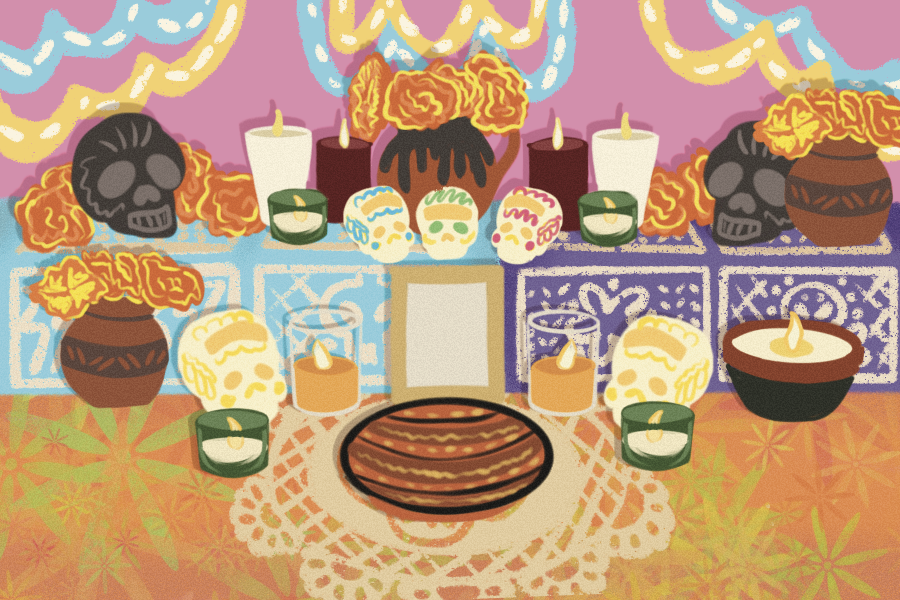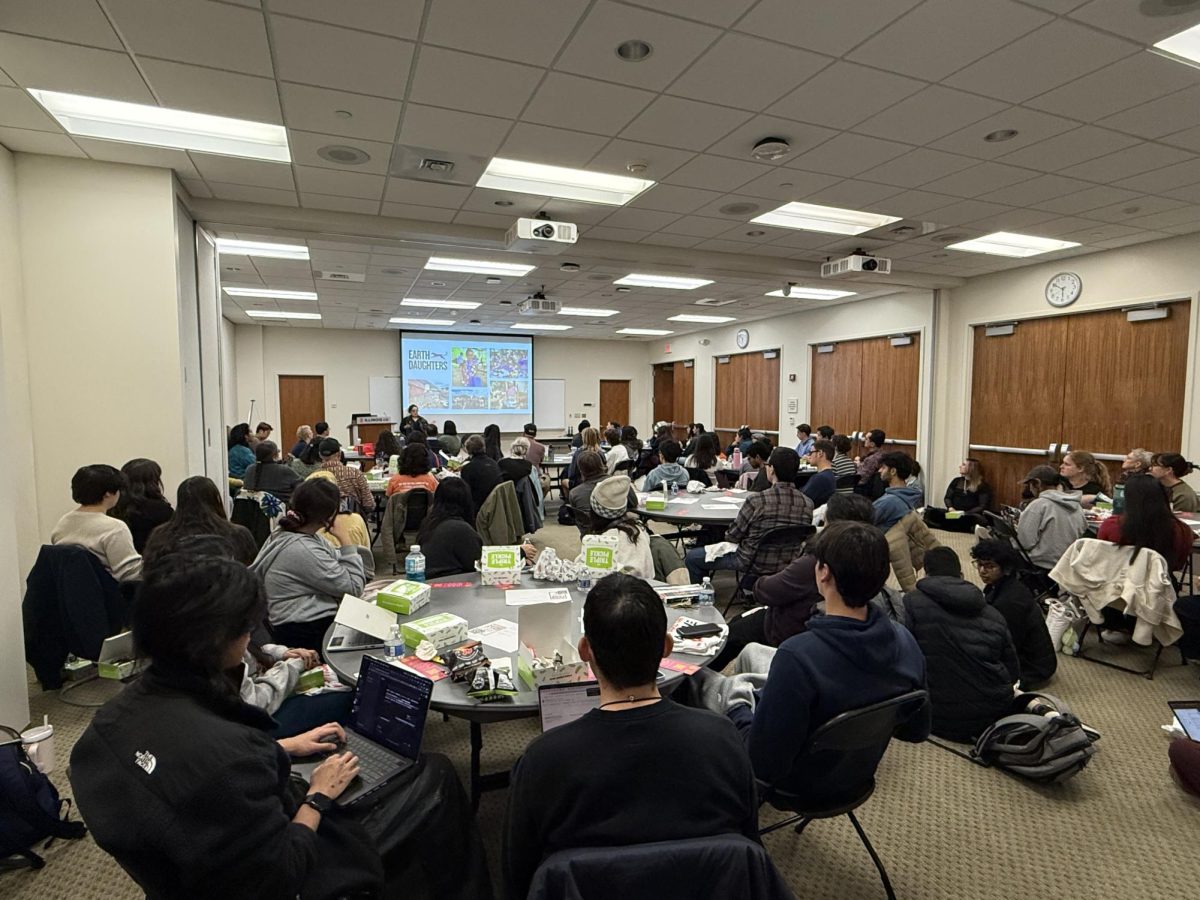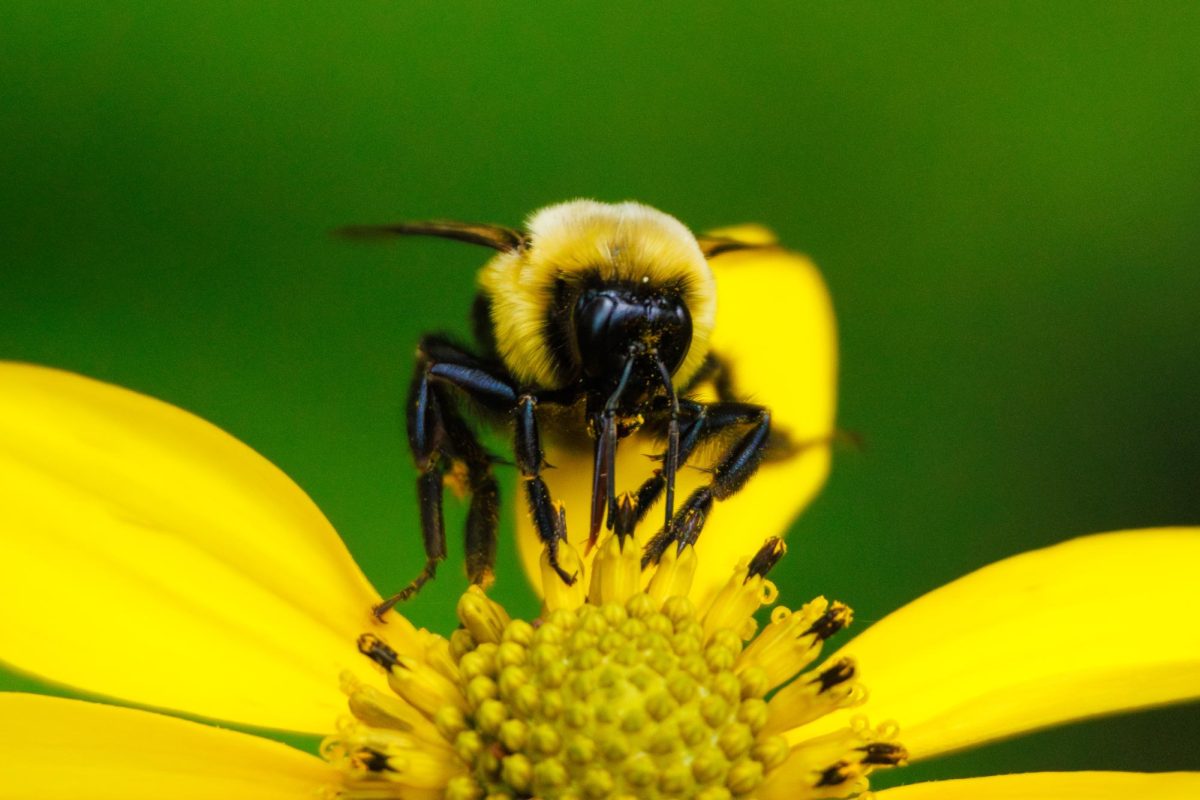Crowds of people invited by La Casa Cultural Latina came together at the University YMCA on Wednesday to celebrate the traditional Hispanic holiday Dia de los Muertos.
Dia de los Muertos — translated to Day of the Dead in English — is typically celebrated from Oct. 31 to Nov. 2 and honors lost loved ones through a celebration of their lives. It is widely observed across Latin America, most commonly in Mexico.
La Casa opened the University YMCA doors at 6 p.m. and welcomed guests into a building filled with colorful decorations and the smiling faces of various volunteers.
Guests drifted toward the different traditional foods provided in a separate room, such as pan dulce, tamales and champurrado. As attendees ate, they sat at tables where they were given the opportunity to participate in arts and crafts.
One student staff member, Mary Anaya, sophomore in LAS, was decked out in full skull makeup like many others. She worked to keep an eye on the flow of students.
Get The Daily Illini in your inbox!
“We had shifts assigned to us before, during and after the event,” Anaya said. “I’m in charge of making sure the space isn’t too crowded and packing things up after the event.”
Strings of cempasuchil, more commonly known as yellow marigolds, and papel picado, a colorful, decorative tissue paper, were also strung from the ceiling, which created a distinct ambiance for the event. Regional Mexican music provided a traditional background melody to the festivities.
Stephanie Cardoza-Cruz, assistant director of La Casa, commented on the environment La Casa hoped to create for guests.
“We hope that when people are walking through Dia de Muertos they fully feel transported into a holiday celebration, that they are (else)where in the world celebrating Dia de Muertos,” Cardoza-Cruz said.
Further inside the building, guests were met with the large community ofrenda, which is a type of traditional altar used during Dia de Muertos to pay tribute to loved ones who have passed away. The ofrenda was decorated with sugar skulls, candles and photographs of family and friends submitted by the community.
“Making the ofrenda is a big communal effort and it’s done by the student committee,” Cardoza-Cruz said. “But we invite the entire community to submit photos of their loved ones that we will put up on the ofrenda so that they know that those family members are here for them.”
Ofrendas are typically composed of specific items and offerings to remember loved ones. Traditional components of an ofrenda include cempasuchil, papel picado, pan dulce, photos of loved ones, sugar skulls, candles and other various offerings.
Smaller altars also circled the room, built by registered student organizations that are a part of the La Casa Alliance of Student Organizations. Some groups even made altars ahead of time and put them up around campus.
One of those RSOs, the Latino Student Association, put up altars in different residence halls the day before the event. The effort was organized by the organization’s program directors, Stephanie Ovalle and Isabella Uriarte.
“Most of our general members are freshmen and when they come here to campus, they don’t feel that seen,” Uriarte said. “Seeing those altares (altars) in their residence halls, it’s a reminder of home.”
Remembrance is a key theme to the holiday and, for those who celebrate, Dia de los Muertos often provides a way for people to remember and connect with their ancestors.
“Specifically for the newer generation, it helps people think about what our ancestors have done for years,” Cardoza-Cruz said. “It really makes them feel connected to their homeland.”
Non-Latino students also welcomed the event with open arms, such as Jada Allen, senior in LAS. Allen shared how she enjoyed the event despite not having a personal connection to Dia de los Muertos.
“I love it,” Allen said. “It’s very pretty. You can tell that they put a lot of time and effort into the decorations.”
La Casa hosts events on campus throughout the academic year. For information about programming and events, visit their website.
At the end of the day, La Casa said they hoped to promote their mission, which is to enhance and empower Latino students on campus.
“The Latino student numbers are growing and the country’s Latino population is stronger than ever,” Cardoza-Cruz said. “Being able to celebrate Dia de los Muertos really shows that all of that is true, even in the smallest part of Champaign-Urbana.”










